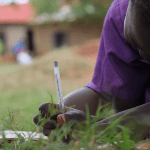It’s Not Business as Usual with Women’s and Children’s Health
Thousands of women and children are dying each day. Many of these deaths are preventable, but occur in limited-resource settings where access to proven lifesaving medicines and technologies is low.
In response, the United Nations Commission on Life-Saving Commodities was established in 2012 as part of the UN Secretary General’s Every Woman, Every Child initiative. The commission aimed to increase access to and awareness of 13 underused lifesaving commodities. These span reproductive, maternal, newborn, adolescent and child health – they include commodities such as female condoms (for reproductive health), magnesium sulfate (MgSO4, for pre-eclampsia), chlorhexidine (for umbilical cord care) and zinc and oral rehydration salts (ORS, for diarrhea in children).
Over the past four years, the commission has been successful in catalyzing increased use of and access to these commodities – but not just by doing business as usual. Rather, the commission took a different, notably more collaborative, approach that was unique in several key ways, such as having a commodity-focused strategy and promoting the use of innovations like digital health.
In place of the more customary approach of using vertically defined health conditions as the starting point (i.e., an infectious disease, a non-communicable disease or a chronic condition), the commission’s efforts focused on identifying and increasing access to specific lifesaving commodities. Its recommendations pinpointed the main obstacles to accessing and using the commodities, and targeted a variety of approaches to overcome them – including policies and regulations, market-shaping, advocacy and financing.
The commission prioritized innovation and creativity in its strategy, with digital health playing a key role. While often seen as a risk due to challenges with infrastructure, cost, scale and sustainability, proven digital health initiatives can help amplify the impact of lifesaving commodities when properly applied. Despite the known risks, the commission made the decision to explore how digital health could help it achieve its broader goal of saving the lives of women and children – especially after understanding exactly what the role of digital health might look like. For example, digital health can be used to help increase demand by directly informing and educating beneficiaries of the health system about specific commodities and their use through text or supportive phone calls from health providers. It can also be used to support the training and capacity building of health providers by permitting them to access content on phones, computers or tablets when and where they need it.
Accordingly, a Digital Health Technical Resource Team was convened by HealthEnabled, and it worked with digital health experts from around the globe to support the commission’s work.
Collaboration across expert groups and organizations was key to the success of the digital health initiatives within the commission’s work. Another factor of success was the existence of appropriate supply and demand mechanisms for the commodities, which proved to be resilient and flexible enough to accommodate the changes that digital interventions could bring about.
As such, expanding access to essential commodities presents a unique challenge to digital health use and uptake, where digital health can enhance commodity access and use and commodity-driven strategies can further accelerate the adoption of digital health. The requirements around workflows, cost/affordability, availability for “real-time” information and data exchange are also key drivers and facilitators of successful digital health interventions.
This is why the government of Kenya, through a collaborative partnership with PATH’s (Program for Appropriate Technology in Health’s) APHIAplus Initiative and the commission’s Newborn Technical Resource Team, took great interest in developing a digital health learning platform for health providers on chlorhexidine for umbilical cord care. A new preparation of chlorhexidine was being rolled out and the Kenyan government wanted to ensure that providers would be properly trained and engaged with, and would retain the pertinent information at a later time as they continued to administer care to patients. In partnership with the Moi University Institute of Biomedical Informatics and HealthEnabled, PATH and the government of Kenya developed a digital learning platform for chlorhexidine that is accessible on smartphones and tablets and takes advantage of mixed media to ensure an interactive learning experience. It has been well received and it is anticipated that its rollout will soon extend beyond the initial catchment sites in the near future.
Four years on, the health experts implementing the commission’s recommendations near the end of their mandate, but they leave behind a practical legacy:
- A Practitioners’ Network which will both respond to knowledge needs at the country level and capture country and regional knowledge on how to increase access to lifesaving commodities
- Guidance and lessons on commodity-driven strategies (that incorporate digital health and other innovations)
- A knowledge library that includes tools and resources on advocacy, digital health, demand generation and many other areas for use at local, national and global levels
We should not stop our efforts here. In the spirit of the commission and its achievements, we, as public health practitioners, health providers, advocates and decision-makers, should all continue to work together – under the direction and leadership of national governments – to build upon the creative, yet practical, approaches set forward under the commission to improve access to and appropriate use of lifesaving commodities with the ultimate goal of saving even more lives around the world with solutions we know work.
Nadi Nina Kaonga is the interim deputy director for HealthEnabled. Gary M. Cohen is executive vice president and president, Global Health and Development for BD (Becton, Dickinson and Company).
Photo: Remind MI agent Mildred Kawala records the birth of Lonar Hamuzala’s newborn baby boy at the Nameebo Rural Health Centre in Zambia’s Southern Province on Oct. 18, 2011. Photo by Nesbitt for UNICEF
- Categories
- Health Care



